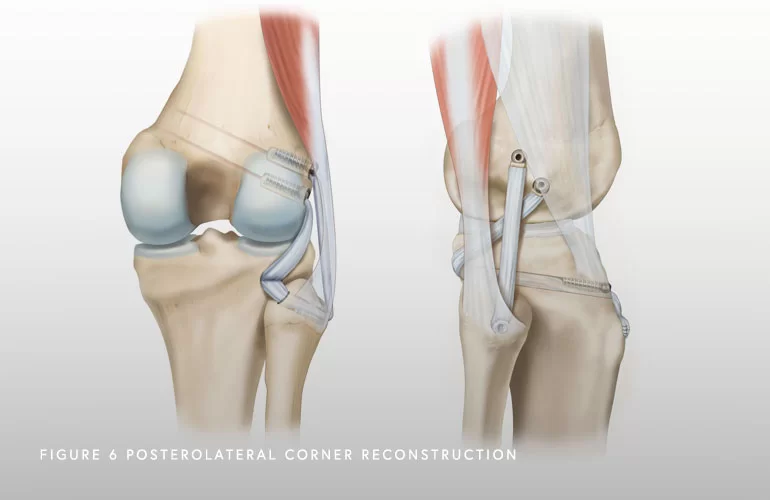
Knee - Arthroscopy and Sport Injury Specialist in Mumbai
Lateral Collateral Ligament (LCL)Tear Treatment
Dr. Aditya Pawaskar is one of top notch knee arthroscopy surgeon and Sports Injuries Specialist in Mumbai. With his extensive experience in orthopedics, he provides excellent care and effective treatments for patients with shoulder and knee problems.
A Lateral Collateral Ligament (LCL) tear is a less common but significant knee injury that involves damage to the ligament on the outer side of the knee joint. The LCL helps stabilize the knee and prevents excessive side-to-side movement of the shinbone (tibia) relative to the thighbone (femur). LCL tears can result from trauma, direct impact, or forceful twisting of the knee.
Here's an overview of LCL tear reconstruction:
LCL Tear Grading:
LCL tears can be classified into different grades based on the severity:
- Grade I: Mild sprain with minimal ligament damage. The ligament is stretched but not torn.
- Grade II: Partial tear of the ligament fibers. Some fibers are disrupted, causing increased joint instability.
- Grade III: Complete tear of the ligament. The ligament is fully ruptured, leading to significant joint instability.
Surgical Reconstruction:
Surgery is often recommended for Grade III LCL tears or severe Grade II tears that do not respond well to conservative treatment. LCL reconstruction involves repairing or replacing the damaged ligament to restore stability to the knee joint.
Sports Prone to Lateral Collateral Ligament (LCL)Tear Treatment and Injury Risks:
In India, various sports may pose a risk of Lateral Collateral Ligament (LCL) tears, necessitating treatment. Sports associated with lateral movements, abrupt stops, and potential impacts to the outer side of the knee include:
- Football (Soccer): Frequent changes in direction, sudden stops, and physical contact increase the risk of LCL injuries.
- Cricket: Fast bowlers and fielders involved in lateral movements and abrupt stops may be susceptible to LCL tears.
- Rugby: The physicality, tackles, and lateral movements in rugby may lead to LCL injuries.
- Kabaddi: Frequent lateral movements and abrupt directional changes in Kabaddi can pose a risk of LCL injuries.
- Wrestling: Wrestling, with its intense physical contact and lateral movements, can contribute to LCL tears.
- Basketball:Jumping, landing, and lateral movements in basketball may increase the risk of LCL injuries.
- Badminton:The lateral movements and sudden accelerations in badminton can pose a risk to the articular cartilage.
- Wrestling: Wrestling, with its intense physical contact and rapid movements, can contribute to cartilage damage.
- Hockey: Quick lateral movements, sudden stops, and physical play in field hockey can lead to LCL injuries.
- Volleyball: Quick lateral movements and potential awkward landings in volleyball may pose a risk of LCL injuries.
- Athletics (Track and Field): Events involving lateral movements, such as hurdles or lateral jumps, may contribute to LCL tears.
Consult with Dr. Aditya Pawaskar, a Sports Medicine Specialist in Mumbai, to determine the most appropriate treatment for Knee & shoulder injuries based on individual cases and the latest medical advancements.
